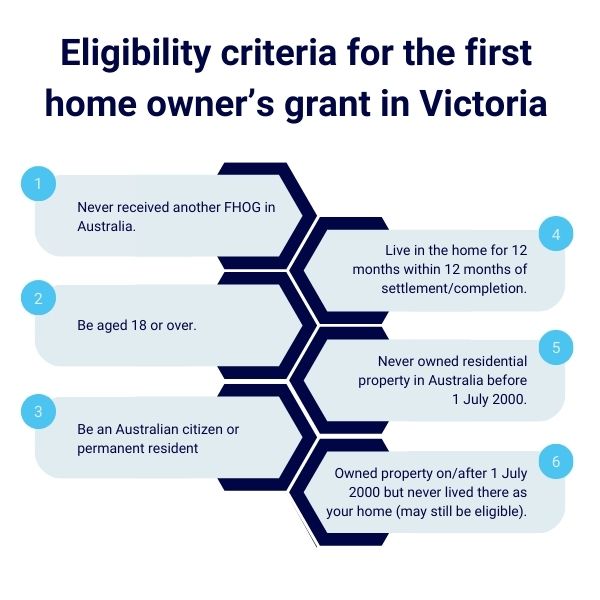Buying your first home is no doubt an exciting prospect – but also something that may feel out of reach to many people in Victoria as house prices continue to soar. Figures suggest that the median house prices in Melbourne have risen by 67% in the decade to June 2023.
The good news is that the Government does want to continue incentivising home purchases, particularly for first-time home owners. This is where the first homeowner’s grant comes in. Just one of the buying incentives offered by the State Government, the grant is designed to make owning your first home easier.
In this article, we will explore not only what this grant is, but outline the eligibility criteria and application process to help you better understand if this is something you may benefit from.
Within this article, we’re going to explore everything there is to know about the first homeowner’s grant (FHOG) in Victoria, including the eligibility criteria and the application process. By the end of this piece, you’ll have a clear idea of whether you’re a candidate and how you can apply!
Table of contents
- What is the first home owner’s grant?
- Eligibility criteria for the first home owner’s grant in Victoria
- Application process for the first home owner’s grant
- Additional incentives for first home buyers in Victoria
What is the first home owner’s grant?
From 2001 to 2021, homeownership rates have dropped from 71% to 68% in Victoria, so to help first-time buyers get on the property ladder and to make housing prices more affordable, eligible candidates will be given $10,000 to build or buy in the state.
Your first home can be a house, townhouse, apartment, or unit, but it can’t cost more than $750,000. This must be the first time the property is being sold as a home, and it can’t be older than five years old.
This will help with buying in the current economy, as house values are on the rise in most parts of the country. In June 2023, house prices in the Metropolitan Melbourne area rose to $820,000 and unit prices to $600,000 – this is a 67 per cent increase in the last decade.
In regional Victoria, the average price of housing almost doubled, from $282,500 to $560,000, from 2013 to 2023. Unit prices rose from $245,000 to $420,000.
However, people who entered into contracts between 1 July 2017 and 30 June 2021 in Regional Victoria were granted $20,000.
All states and territories in Australia offer incentives for first-time buyers. In New South Wales, Western Australia, and the Northern Territory, you are also eligible for $10,000; in South Australia, the sum is $15,000. In Queensland, this grant is between $15,000 and $30,000 in Queensland, and it is $30,000 in Tasmania. In the Australian Capital Territory, its FHOG has been replaced by the Home Buyer Concession Scheme, which provides a full stamp duty concession for eligible applicants, but no grants will be given.
Eligibility criteria for the first home owner’s grant in Victoria
To qualify for this grant, people must not have previously received another in Australia, they must be aged 18 or over and be an Australian citizen or permanent resident (either by the time it comes to moving into the property or when the home is ready to be lived in).
Another condition is that you must live in the home for at least 12 months within 12 months of getting the keys or from when the building of the property is complete.
Finally, to quality you must not have owned a home or other residential property in Australia, either jointly or separately, before 1 July 2000. If you or your partner owned property on or after 1 July 2000 but did not live there as your home, you may still be eligible for the grant.
Application process for the first home owner’s grant in Victoria
For most first-time buyers, it will be the bank or credit union providing your finance that will apply for the grant on your behalf. If this is needed before you put your down payment, then you must lodge your application with an approved agent.
Each applicant and their partner must provide a copy of their ID and evidence of citizenship or permanent residency if they are applying through an agent. If you’re doing it directly on the government website, you’ll need to provide copies of three forms of ID, examples being an Australian passport, driver’s licence and Medicare card. Additional supporting evidence, such as marriage or divorce certificates, if applicable to you, are also required.
You must then complete the application, giving supporting evidence relating to the property. When the grant is paid to you will depend on if you’re building or buying or whether you’re doing the application yourself or through an agent.
Additional incentives for first home buyers in Victoria
The FHOG may be paid in addition to other exemptions or concessions for eligible home buyers, including exemption from stamp duty and shared equity schemes.
First home owners in Victoria don’t pay stamp duty at all on their first home, even if this is an established one rather than one that’s newly built. All that matters is the property is valued below $600,000 (a saving of around $31,000). If your property is between $600,000 and $750,000, then you may be eligible for savings on stamp duty.
There is also a First Home Guarantee Scheme that helps eligible first-home buyers purchase a property with a deposit as low as 5 per cent, including in regional areas. Housing Australia then ensures up to 15 per cent of the value of a first home, meaning you’d avoid lender’s mortgage insurance. The price cap is $800,000 for homes in capital cities and regional centres and $650,000 for the rest of the state.
It’s possible to use both the $10,000 first-home buyer grant and the guarantee scheme if you qualify, however, as the FHOG is typically only available after the completion of your property transaction, it can’t be put towards the minimum 5 per cent deposit.
The Pilot Shared Equity Scheme may also help eligible first-home buyers, as with this, you will only need to have a 5 per cent deposit in order to buy a home. The Victorian State Government takes a proportional interest of up to 25% in the property. Buyers will then be able to take out a loan that is worth 70% of the value of the home. It’s worth noting that once you sell a house, you will have to repay the Government’s proportional interest.
Final thoughts
Our experienced team at Entry Conveyancing are here to assist you in the world of property, whether this is the first time you’ve bought a property or you’re an investing veteran.
With conveyancers in Melbourne and across Victoria, you’ll have a dedicated conveyancing lawyer by your side to take the stress out of buying, selling, and transferring property ownership. Our team make the process as stress-free as possible, offering a fixed-fee pricing model while they sort through the complex paperwork and legal jargon for you.
They will keep you in the loop every step of the way, offering advice and insight that will allow you to make the most informed decisions for your property transaction. Book your Free Consultation today to find out why people in Victoria are using the services of Entry Conveyancing.






